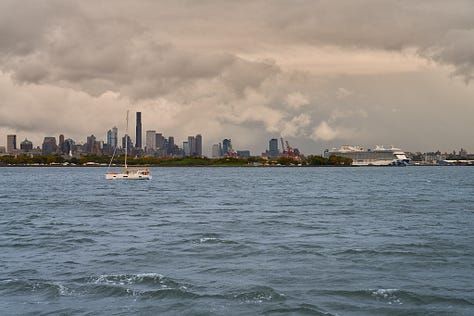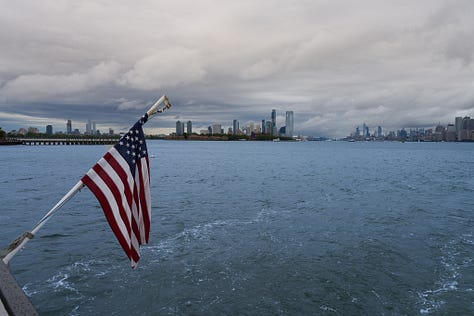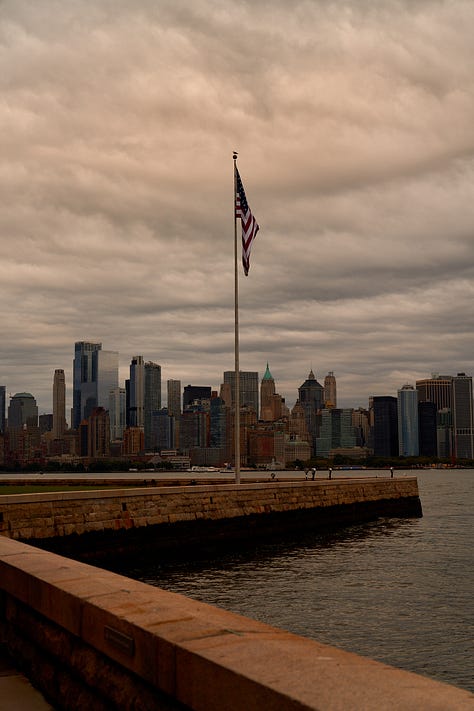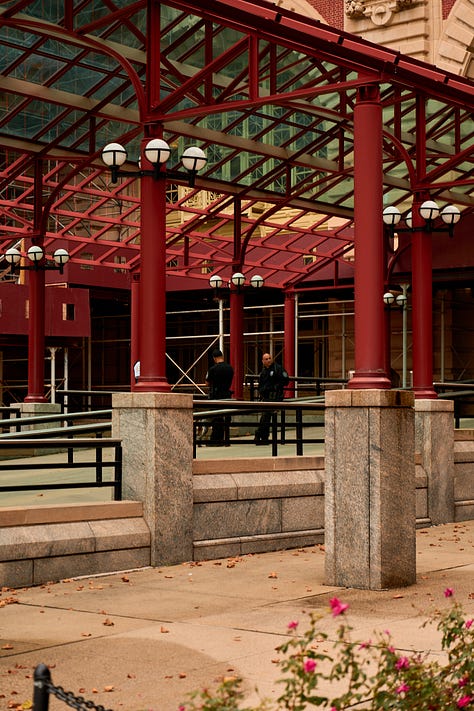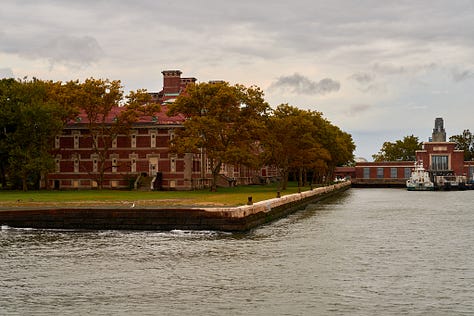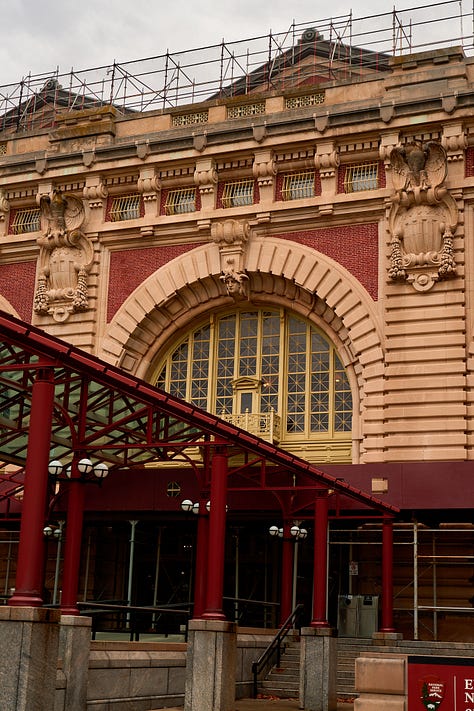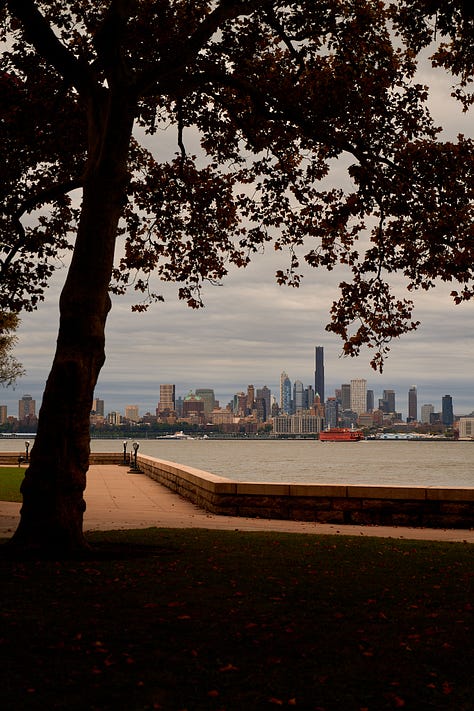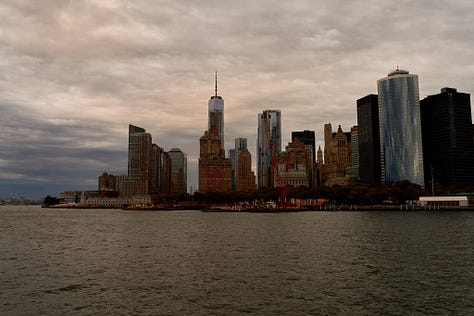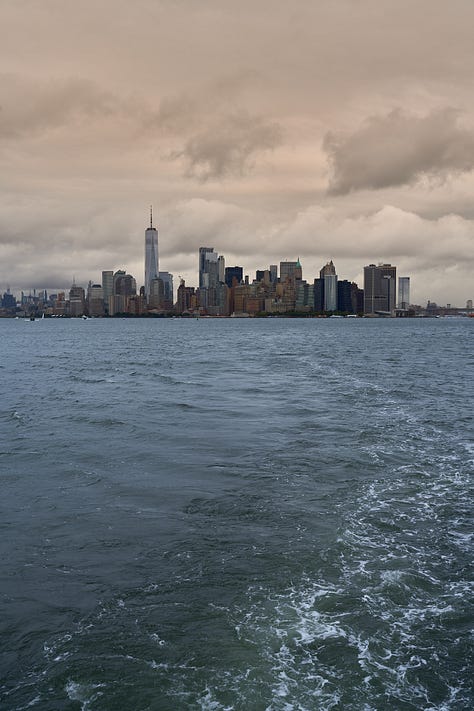The vast expanse of New York Harbor unfolded before me, creating a breathtaking spectacle that left me speechless. The natural harbor, seemed to stretch out endlessly, dwarfing even the towering skyscrapers of Manhattan. As we glided further out into the New York Harbor, I was struck by its sheer scale. Before long I realised that boarding the ferry to Liberty Island was a journey through time and space.
The Statue of Liberty, standing tall and proud against the backdrop of the harbor, symbolized the promise of freedom and opportunity that had drawn countless immigrants to these shores. But equally, it was the symbol of hope for the largest emergency sea evacuation in history on September 11th, 2001. The scale of the operation was unprecedented, an example of the resilience and determination of the New York City community, which still lives on in the current day. I recently visited the 9/11 memorial and learnt a great deal from the tour guides and is partly summarised below.
Unplanned Solidarity: A City Unites
The terrorist attacks of 9/11 triggered a full lock-down of Manhattan as bridges and train services were shut down. With no certainty as to when services would recommence, an estimated half a million people were stranded on the island. The memorial museum’s documentary catches the moment through the eyes of sea captain Samaritans who in a remarkable effort managed to evacuate this entire population in less than nine hours. The scale of the operation was comparable to the Dunkirk evacuation, which transported 350,000 British citizens to safety over nine days. In contrast, the Manhattan evacuation transported around 500,000 citizens over just nine hours.
Downstream Impacts: The Rising Toll of Illness
The core components of emergency management are preparation, response, recovery and prevention. The immediate preparation and response to September 11 was marked by a sense of unity and resilience. However, in the recovery phase, the long-term impacts after the event consequences have been devastating.
Figure 1 – Emergency Management Framework
An estimated 400,000 people were exposed to toxic clouds from the burning buildings on that day. Of these, over 125,000 have registered with the World Trade Center Health Program, and sadly, over 6,000 have lost their lives due to 9/11-related illnesses or other causes.
Research into the health effects of 9/11 dust exposure has revealed that those with greater exposure to the toxic particles have experienced higher rates of death and disease. Scientists continue to study this affected population to better understand the long-term consequences of exposure. Despite initial assurances from the Environmental Protection Agency, subsequent tests revealed the hazardous nature of the dust. The government faced criticism for its failure to adequately protect citizens and enforce respirator use at Ground Zero. Many experienced immediate injuries requiring hospitalization and surgery, while others developed long-term illnesses.
The New York City Fire Department (FDNY) has tragically lost more firefighters to 9/11-related illnesses than were killed on the day of the event. The New York Police Department (NYPD) has similarly suffered significant losses, with over 350 officers dying from 9/11-related conditions.
With regard to the Prevention phase (Figure 1), the entire country and perhaps even the world is actively working to mitigate the risk of such a catastrophe from occurring again. But I will not cover those efforts in this article to avoid writing a thesis!
The Fight for Compensation and Healthcare
In the immediate aftermath of the attacks, scientists began collecting samples of World Trade Center dust to analyze its components and potential health risks. Their findings were alarming, as the dust contained lead, asbestos, and other toxic elements. Subsequent research confirmed that the pulverized cement, glass fibers, and jet fuel residue in the dust were likely responsible for the respiratory problems experienced by rescue workers, survivors, and those living and working in lower Manhattan.
The fight for compensation and healthcare for those affected by 9/11 was long and arduous. After years of debate, Congress passed the James Zadroga 9/11 Health and Compensation Act in 2010, with President Obama providing sign off. This landmark legislation provides financial compensation and healthcare benefits to individuals suffering from 9/11-related diseases. Not only does this cover respiratory illnesses, but also mental health impacts and other chronic illnesses. More recently in 2019, President Trump signed the Continuing Appropriations Act, and Health Extenders Act to increase the maximum number of enrolments into the program.
Enduring Impacts
‘Everyone has a 9/11 story…’ was the tour guide’s opening. No matter where you were in the world, most people seem to remember where they were and what they were doing. I was too young to understand the significance so I continuing playing with Lego in front of the TV while I watch my mother’s expression transform into complete shock.
In the current day, New York City has completely restored its beauty, character and liveliness. But on a single day each year, the city slows right down into a somber mood and acknowledges the lives lost on September 11 and the ongoing impact that it has on victims' families and friends, survivors, rescue workers, and those living near the crash sites.
Additional Photos from my Travels:
